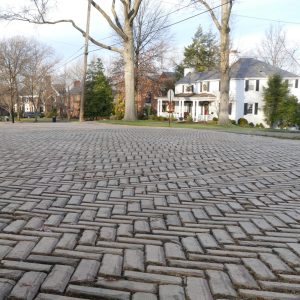Going to Patagonia

In my pursuit to complete 7 marathons on 7 continents, my latest venture took me to South America to complete marathon #23 on continent #6 in September 2019. Bernadette (a Lebo friend, who has run all the continents with me so far) and I flew to Atlanta, where we took a red eye to Santiago, Chile, and hit the ground running.
First, we met up with Barb (our 7 continents amiga) and other friends from all over the U.S. to visit two local wineries, both about a 30-minute drive from Santiago, depending on the traffic. At Santa Carolina, we reserved a picnic lunch complete with bottles of their reserve Carménère and Cabernet Sauvignon. It was winter in Chile, so the mornings were, well, chilly— in the 40s—but once the sun came up, we enjoyed pleasant temperatures in the 70s. At the second smaller winery, Viña Aquitania, our hostess, Barbara, gave us a tour of the boutique vineyard and wine cave. She guided us through a tasting of 4 wines, starting with Cabernet Sauvignon, Carménère, Chardonnay and Sauvignon Blanc, in that order. It seemed backwards to me, but I’m no sommelier. However, I am particular about wine, and surprisingly, I enjoyed each one as she explained them to us. We basked in the inviting sun, sipping our wine with the Andes mountain as the backdrop of this charming winery.
On our second day, we drove to Bellavista, Santiago’s bohemian quarter, and took the funicular (incline) to the top of San Cristobal, where an immense white statue of the Virgin Mary greets visitors. The second largest peak in Santiago provides a beautiful panoramic view of the city and the Andes, so we took a scenic, winding 5K walk through the Parque Metropolitano, Chile’s largest park and home of the Botanical Garden and the Chilean National Zoo.

Our third day took us through wine country on our way to colorful Valparaiso, a UNESCO world heritage site, on the coast of Chile. We walked up and down hills and steps through the town where murals filled the walls of almost every building. Additionally, the clifftop homes and buildings splashed bright greens, yellows, blues and reds, juxtaposed with the dark coastal waters of the Pacific Ocean.
On our fourth day, we headed to the Santiago airport for our 3-hour flight to Punta Arenas, which is at the southern tip of Chile and the main departure point for those flying to Antarctica. Once we arrived, guides from our resort picked us up for the 4.5-hour drive to Torres del Paine National Park in Patagonia. As we drove along the impressive Magellan Strait, we witnessed a gorgeous sunset. Arriving in the dark, we didn’t realize what magnificent views awaited us in the morning.

Day five started with a tour of the east side of the national park. We stopped at the mirador (lookout) above the Rio Serrano to take in the view of our lovely resort under the morning mist and the incredible mountains surrounding us. Next, we stopped at the Paine River, where I captured my favorite photo of the trip with the Paine Massif mountain range reflecting in the glassy, still water. During our tour, we saw guanacos (cousins of the llama) and Southern Crested Caracara (large birds related to falcons) by Laguna Azul, as well as Chilean flamingos in Laguna Sarmiento. Lake Pehoé (meaning “hidden” in Tehuelche, the language of the Aónikenk indigenous people of Patagonia) could not have been more striking with its bright turquoise water beneath the snow-covered Paine Grande Mountain and the Cuernos (horns) del Paine’s granite peaks.

In the afternoon, we headed out to see the west side of the park, where we did an easy hike across a wooden suspension bridge over the Pingo River to a black sand beach where we saw enormous blue icebergs. We then hiked about 25 minutes more to the Mirador Grey to see Grey Glacier. On our way back to the beach, we heard an explosion and witnessed one of the massive icebergs calving. The boom and colossal waves created by the ice falling apart made us watch in awe. On our drive back to the resort, we had another fortuitous moment when we saw a young puma running along a hill. Our guide, Diego, said he sees these nocturnal cats maybe twice a month, so we were grateful that we saw one on our first day in the park. After logging over 14,000 steps that day, we ate a pasta dinner and retired to our rooms to prepare for marathon day.

Hilly hilly… I can describe most of my international marathons with one overarching adjective. The 2019 Patagonian International Marathon in Southern Chile was the most scenic, yet most hilly marathon I’ve run. To get to the start, we took a windy, mountainous road for several miles in a van with our friends. (I could have used Dramamine but felt better once the fresh air hit me.) I didn’t even notice the lack of cheering spectators (i.e., none) along the rolling course, because everywhere I looked, majestic mountains and serene lakes greeted me and encouraged me to keep going to see what lie ahead. The course includes almost 3,000 feet of elevation gain, with major ascents at miles 12 and 17 and what felt like another giant one at mile 24, but that was more a reflection of the timing at the end of the race. The overall course descent was slightly more than 3,000 feet, which can be taxing on tired quads. We ran on mostly paved roads and about 30% of the time on gravel roads. A total of 166 people ran the full marathon (95 men and 71 women) from approximately 26 countries. A French man set the course record in 3:09 and a Canadian woman set a course record in 3:16 the year I ran. The half marathon and 10K were other options that fielded 179 and 100 runners, respectively.
The brilliant views made this course memorable and the finish line was conveniently located at our resort, the Rio Serrano Hotel & Spa. It is dubbed #TheAmazingFinishLine, because of the awe-inspiring backdrop of the Paine Massif, certainly living up to its name. Even though the course was challenging, the Patagonian International Marathon was one of my favorites for a few reasons. In addition to being surrounded by stunning landscape, the weather was perfect, starting at a cool and misty 23 degrees and finishing around 45 degrees, which is typical of Patagonia’s winter in September. Normally, high winds on the course add to the difficulty, but we lucked out with only light winds at the end. As one might imagine, the Patagonian International Marathon promotes conservation by having a cup-less race. We brought our own refillable bottles and were forbidden to drop fuel wrappers or any other garbage along the course. If anyone has participated in or spectated a marathon, huge numbers of volunteers help at aid stations and usually rake up hundreds, if not thousands of plastic or paper cups that most likely go to landfills. Nature is my happy place, so completing my South American marathon in the most spectacular scenery satisfied my soul.

Unstoppable describes the rest of the trip, or perhaps the whole trip. Guided morning and afternoon activities were offered every day at the resort. The morning after the marathon, Bern and I hiked to Condor Lookout, where we did see a condor in its nest, and also a breathtaking view of Lago Pehoé after climbing approximately 620 feet in elevation. A fire in 2011, caused by a man smoking, burned a large part of the lower area where we hiked. (Smoking is prohibited in Torres del Paine. Our guide told us that wildfires from natural sources, such as lightening, do not exist in Patagonia.) Bern and I chose to rock climb for our afternoon activity. Our guides were experts and helped me navigate three formidable routes. Another full day ended with a delightful dinner at the resort and a much-deserved glass of Carménère.

Our final day in Patagonia included the opportunity to hike 13 miles roundtrip to the base of Las Torres (three distinctive granite towers) of the Paine Massif. After about 4 miles and 1,378 feet of elevation gain, the terrain became icy and tricky to climb without microspikes. I decided to turn around and head back down the mountain to return to the resort. Since we had the afternoon open, Bern and I went horseback riding with friends and our gaucho, Romero. Our last activity in Patagonia did not disappoint, with stunning views of the picturesque mountains, Rio Serrano, and Rio Grey.
We shared another phenomenal adventure with friends from our trips to Antarctica, Africa and Australia and met a few more fantastic like-minded friends who love to run, hike and travel the globe. I would run to the ends of the earth with these friends.





